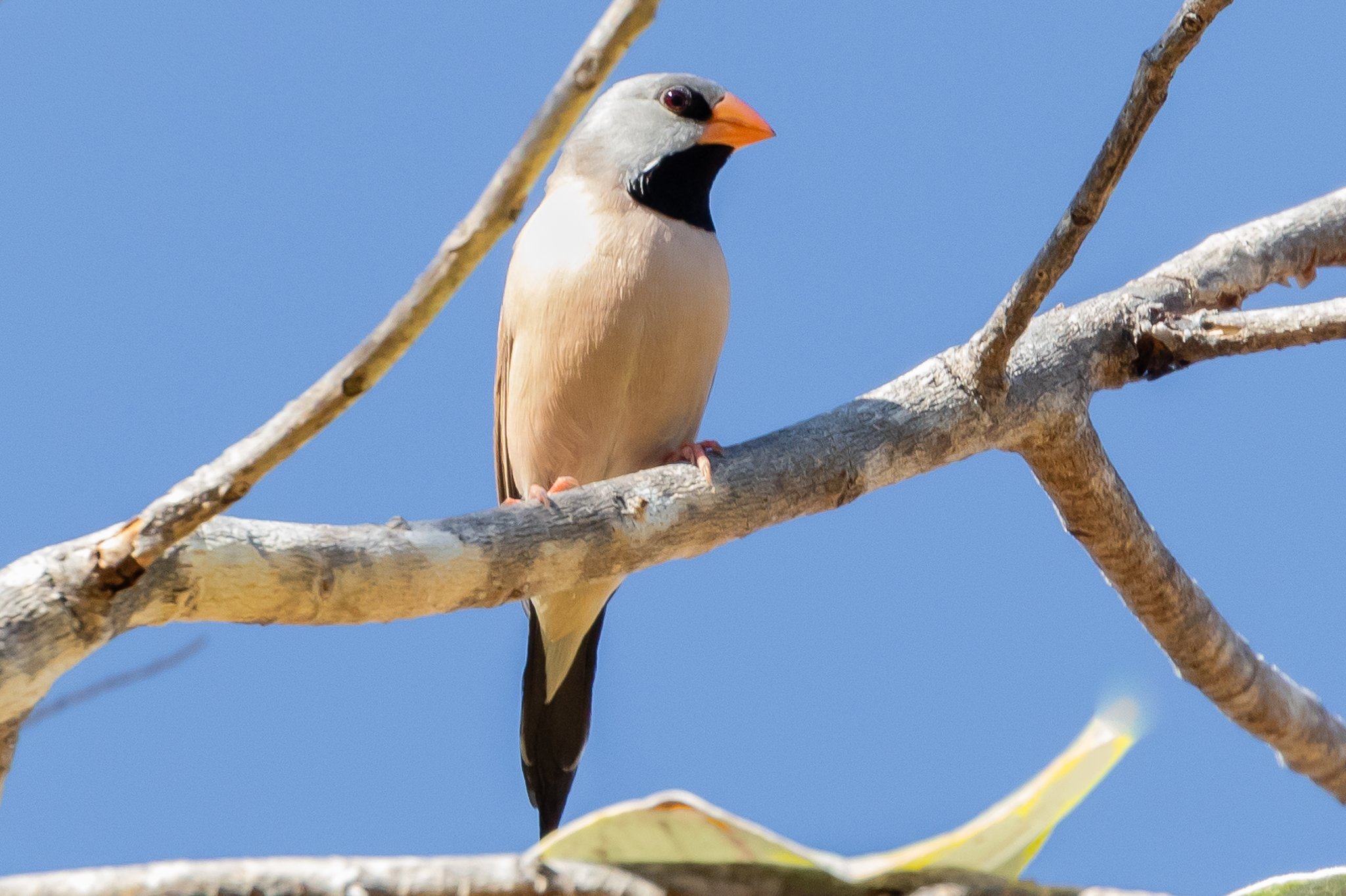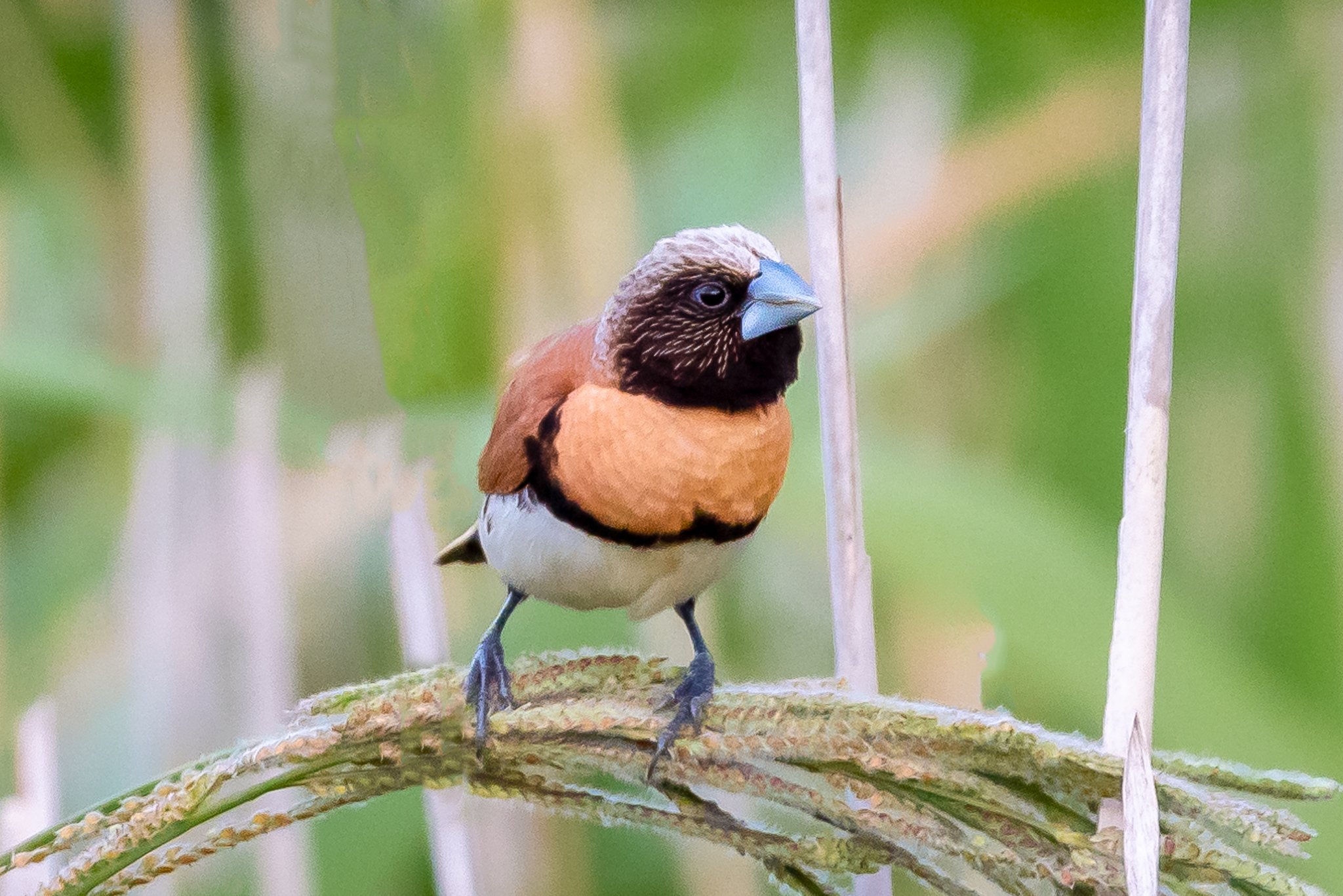Australian Finches
Australia’s 21 finches belong to the Estrildidae family. They are small birds (10-16 cm) with short, thick, pointed beaks suited for their primary diet of seeds. They are spread widely across Australia’s shrubby forests and grasslands. Australia’s finches are not closely related to the so called “true” finches seen across most of the world except in Australia. Finches are favourites with caged bird breeders and enthusiasts because of their size and colour.
Photo: A resident of the far south-west corner of Australia, the Red-eared Firetail (13 cm) adds a splash of colour amongst lakeside reeds and forest streams. They feed on seeds and some small insects.
The rarest of the beautiful and endangered Gouldian Finches (14 cm) is the Golden-headed morph, making up one per cent of the Gouldian population, as seen here at Taronga Zoo in Sydney.
The Double-barred Finch (11 cm) is found across northern and eastern Australia in grassy woodlands and forests. This bird, photographed in Darwin with its black rump, is from the northern race. Double-barred Finches eat seeds and some insects.
Zebra Finches (10 cm) are widespread across Australia’s dry grasslands. They feed on fallen seeds on the ground and take some flying insects, especially when feeding their young.
The Beautiful Firetail (13 cm) inhabits the south of Victoria and coastal New South Wales, South Australia and Tasmania. It prefers damp heathlands and wooded areas; feeds on seeds and insects in low undergrowth.
A Long-tailed Finch (16 cm) watches a waterhole before descending for a drink. Long-tailed Finches are found across the tropical northwest, feeding from the ground on grass seeds.
This Red-browed Finch (12 cm) feeds on a seed head but is more commonly seen feeding on the ground. Red-browed Finches are found along the east coast of Australia.
The Diamond Firetail (13 cm) inhabits the South-east of Australia. Feeding exclusively on the ground; an endangered species in the woodlands of New South Wales.
Across the grassy tropical woodlands of north Australia, Masked Finches (14 cm) are never too far from water. They feed from the ground on grass seeds.
Red-headed and Black-headed Gouldian Finches perch above a waterhole near Katherine, Northern Territory. Gouldians feed on tall grasses across the tropical north, sometimes taking insects on the wing.
In Australia the Blue-faced Parrot-Finch (12 cm) is found only at the rain-forest margins of Cape York’s east coast. This finch ranges from Japan to Micronesia. Feed on grass seeds.
Chestnut-breasted Mannikins (12 cm) feed on the seed heads of tall grasses around swamps and mangroves. They range across the north and the east of Australia.
Crimson Finches (14 cm) are common across the northern tropical woodlands. They feed on seed heads of the taller grass types, and ocaisionally on insects.












